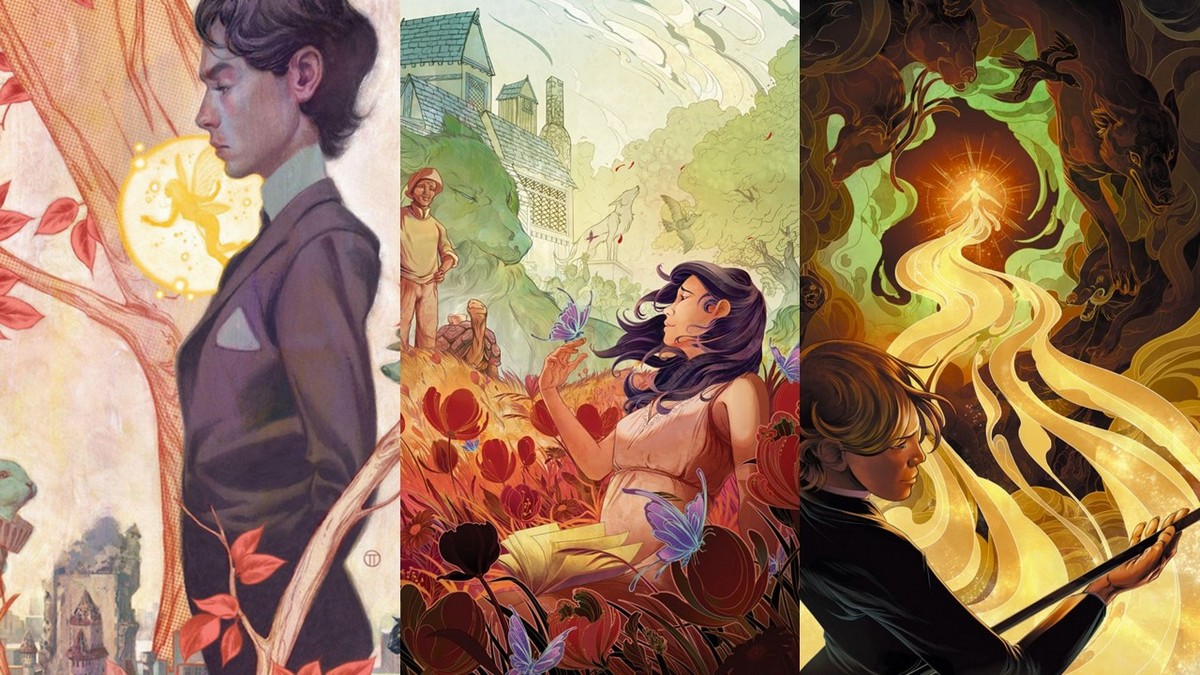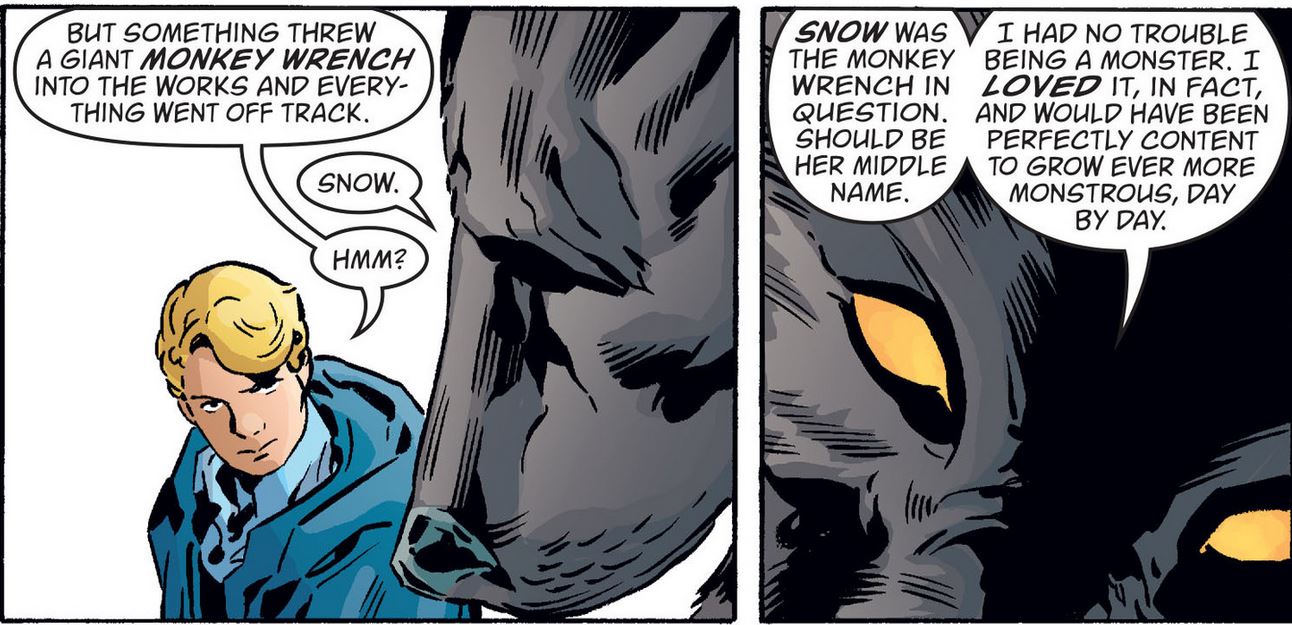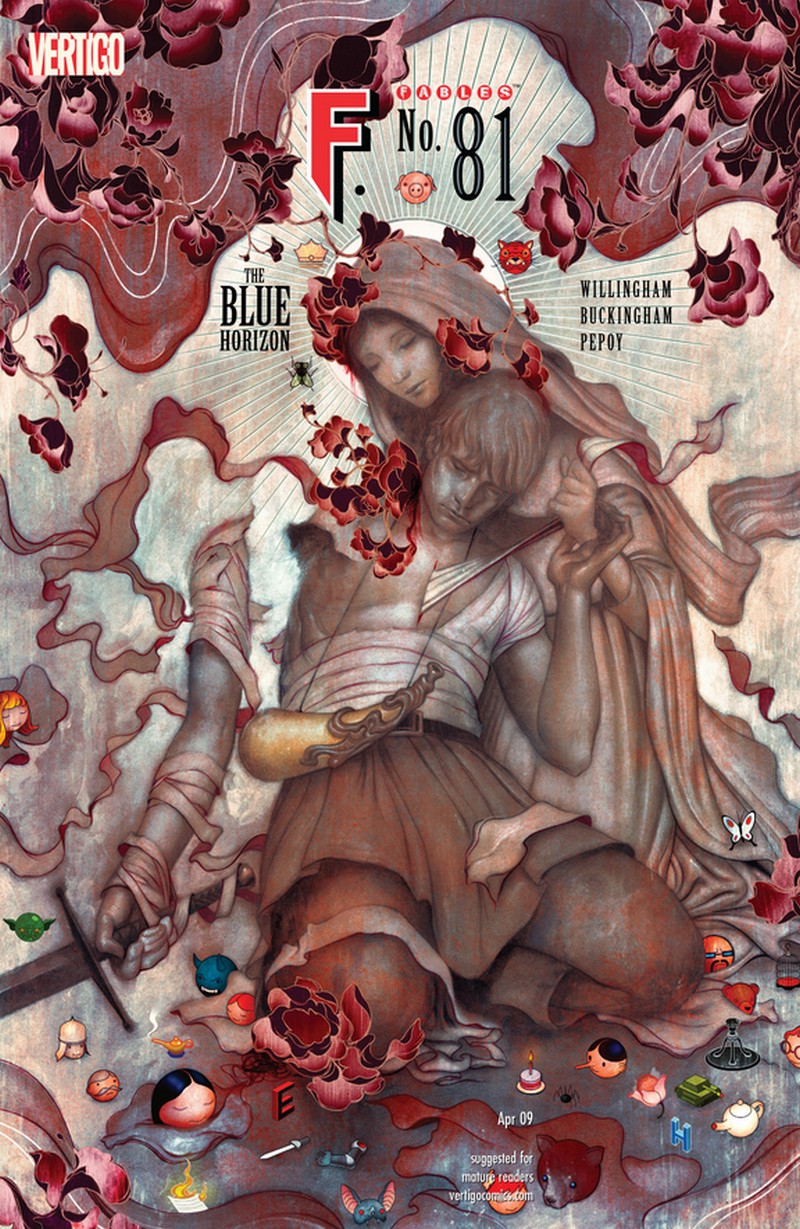From Fables to Realities: Exploring the Creative Work of Bill Willingham

Hailing from Fort Belvoir, Virginia, Bill’s journey through the worlds of imagination has left a long-lasting mark on literature, comics, and the art of storytelling.
Bill’s narrative journey begins with his artistic endeavors at TSR, Inc. during the late 1970s and early 1980s. His talent soon extended beyond covers, as he also contributed interior artwork to classics like ‘White Plume Mountain,’ ‘Slave Pits of the Undercity,’ and more, enriching the pages of these fantastical worlds. Venturing further into the realms of creativity, Bill’s comic book series “Elementals” became a defining moment in his career.
But the birth of ‘Fables’ solidified Bill Willingham’s legacy in the world of fiction. This groundbreaking series breathed new life into timeless fairy tale characters, placing them in a modern context that resonated well with readers around the globe. The acclaim was unanimous, with ‘Fables’ receiving the prestigious Will Eisner Comic Industry Awards for best serialized story and best new series in 2003. We had an opportunity to chat with Bill regarding ‘Fables,’ and this is what he had to say.
Comic Basics: What was your main inspiration behind creating ‘Fables’
Bill Willingham: That’s nearly impossible to answer. If one lives long enough, everything he’s done or had done to him, or everything he’s found an interest in, is going to inspire the next story.
Some of the things I recall are my love of public domain characters and stories that were on my mind at the time. I wanted to do something with a secret community living amongst us. I wanted to use characters already (at least potentially) known to a wide audience. That meant using fairy tale characters or mythological
characters.
Since Greek and Norse myth characters were being widely used then, and fairytale characters weren’t widely used then. I chose fairy tales.
Fairy tale characters are often used or referenced in modern media, but you decided to use them as the centerpiece of your stories, adding a unique twist to them. How?
The unique twist, if I can claim such a thing, is simply a matter of deciding if these are indeed the same characters from the old tales. How might they have changed over the decades and centuries since we last heard anything about them?
I wanted to be fair with each character, extrapolating what sorts of things they might have gone through since their original tales and how that could
have affected them. As much as possible, I set for myself the goal of being honest with them – using the characters that existed, and maybe not the characters I wish existed.
What do you think made ‘Fables’ so popular and resonate with the readers so well?
I think much of it was the luck of timing. “In the time of steam engines, people build steam engines.” In the same way, I believe a time of renewed interest in old fairy tales was on the horizon, and I just happened to make use of it early enough to be considered innovative.
The series deals with numerous themes, including personal lives, identity, and political allegory…
I don’t think there was all that much political allegory in these stories as one might think. Politics, yes. Allegory, no. Then again, the story isn’t told until the reader has had his way with the material, and if the reader finds some story in ‘Fables’ to fit nicely as an allegory to something in the modern world, who am I to disagree? All stories are a collaboration between writer and reader; between performer and audience member.
And no story is complete until the reader has done his part. In
that way, the oft-argued question of “Who really wrote the complete works of Shakespeare?” has been answered. It was me. None of Shakespeare’s stories were complete until I, as an audience member, provided my contribution. Therefore I wrote it all.
How did you balance these elements while trying to keep an engaging narrative?
I did the best I could at writing stories that sparked my interest and trusted that an audience might be out there of similar sensibilities. If I could stay engaged, maybe they would too.
Were you bothered by maintaining the “historical accuracy” of the characters, and how did you work around that?
I determined at the outset to adhere as closely as possible to the original tales as my starting point. That said, when I encountered them, most of these tales had multiple versions of the same events. For example: In the Little Red Riding Hood story, sometimes the woodcutter chopped the Big Bad Wolf into tiny bits. That version doesn’t leave me with a living Big Bad Wolf to use in ‘Fables,’ so that was no help.
But in at least one version, the woodcutter cuts Bigby’s belly open, stuffs
him full of boulders sews him up, and throws him into the river to drown. Of course, I could use that version of events and still have a Bigby to use later on because the woodcutter didn’t know Bigby was the son of the North Wind (according to my mythology) and could manufacture his own air at the bottom of the river indefinitely. The woodcutter goes his way, thinking he killed the wolf.

Red Riding Hood goes her way thinking the wolf is dead. But all the while, maybe even months, pass while Bigby manufactures his own breathing air at the bottom of the river until he is able to pass all of those pesky stones weighing him down. It wasn’t a matter of working around the original stories; it was a matter of thinking through the many possibilities suggested by them.
Could you share some insights into the creative process of working with different artists throughout the series, including Mark Buckingham, Lan Medina, and Steve Leialoha?
Yes. What I learned most, best, and (I wish) soonest, is that, when working with top-notch artists like Buckingham, Medina, Leialoha, James Jean, and so many others, is this: Try to get out of their way as much as possible. Give them a script and turn them loose.

It wasn’t always easy. DC, for example, liked to maintain control. They had a long-standing policy of requiring no less than three sketches for every proposed cover illustration. It took them nearly half of James Jean’s run on ‘Fables’ covers to convince them that it was much better to simply let James decide for himself what
would be on any given cover. In most cases, giving the artist free reign pays off more often than trying to keep them in line.
The series features a wide range of characters from folklore and mythology. How did you choose which characters to include and adapt for the Fabletown community?
Throughout ‘Fable’s’ entire run, I had one scientific formula for deciding which characters to use out of the abundance of potential characters available. Here it is: A) Is the given character in the public domain? And B) Do I want to use the character?
That’s it. That’s the formula for deciding if any character is a ‘Fable’ and will appear in one of the stories. Of course, I tended to choose my favorite fairy tale characters.
Characters like Snow White and Prince Charming undergo major character development.
Among others, yes.
How did you reinterpret these classic characters for modern audiences with modern sensibilities?
As much as possible, I tried to ignore modern sensibilities. Sure, I’m a product of them, so I couldn’t entirely dismiss my own culture and upbringing, but what I most often strove for were universal sensibilities; those aspects of our nature that are timeless and unchanging.
Nobility will always be present. Sometimes nobility is out of favor, forced to keep its collective head down, and therefore one must search to find it, but it never doesn’t exist.
Same with villainy, greed, true love, avarice, and so on. Those are the ingredients of good stories.
The series also encompasses various genres, from murder mystery to conspiracy thriller. How did you approach blending these genres while maintaining a consistent tone?
Try to be true to each character. I doubt I always succeeded, but that was always the goal.
‘Fables’ has won numerous awards and inspired spin-offs and adaptations. How does it feel to see the lasting impact of your work in the industry?
Whether or not Fables has a real, lasting impact is something that won’t be decided until long after I’m gone. Will it stand the test of time? I have no idea. It would be nice, though.
What advice would you give to writers looking to create their own unique reinterpretations of classic stories and characters?
Go for it, with my blessing. Public domain characters and stories mean you own them. You individually own every atom of every one of them. Why not make use of this treasure trove you already own?
Q: Looking back on your body of work, is there a particular character or storyline from ‘Fables’ that holds special meaning for you? If so, why?
I suppose there must be, but it changes. While writing a given story the details of that story were forefront in my mind. Looking back, most of what I remember fondly are bits and pieces that seem to hold up – bits I think went well.
What can the fans expect from ‘Fables’ #161?
A: Isn’t that the next-to-final issue of this new run? I think 162 is the final issue of the new story arc. What I hope they can expect is a satisfying conclusion to the new story and come away from it feeling like the new story was worth bringing these characters back for one more tale.
Any upcoming projects besides ‘Fables’ that you can discuss?
Of course. In a rare confluence of timing and production and such, I have two comic book series coming out at the same time. The remaining issues of this Fables arc, plus I’ve written a six-issue series based on the Frazetta-Bakshi animated film ‘Fire and Ice,’ illustrated wonderfully by Leonardo
Manko.
As of writing these answers to your questions, five of the six ‘Fire and Ice’ comics are still yet to come out, published by Dynamite Comics in association with the Frazetta Girls.
Also, I have some prose stories coming out in various odd places due to the recent boom in new pulp-style adventure magazines being produced. I want to support the trend, so I’ve submitted short stories to a small-but-seaworthy boatload of them. There’s one other larger project on the horizon, but I’m not yet at liberty to reveal it.
You can follow Bill on X @billwillingham or visit his store to get the latest updates regarding his projects.

